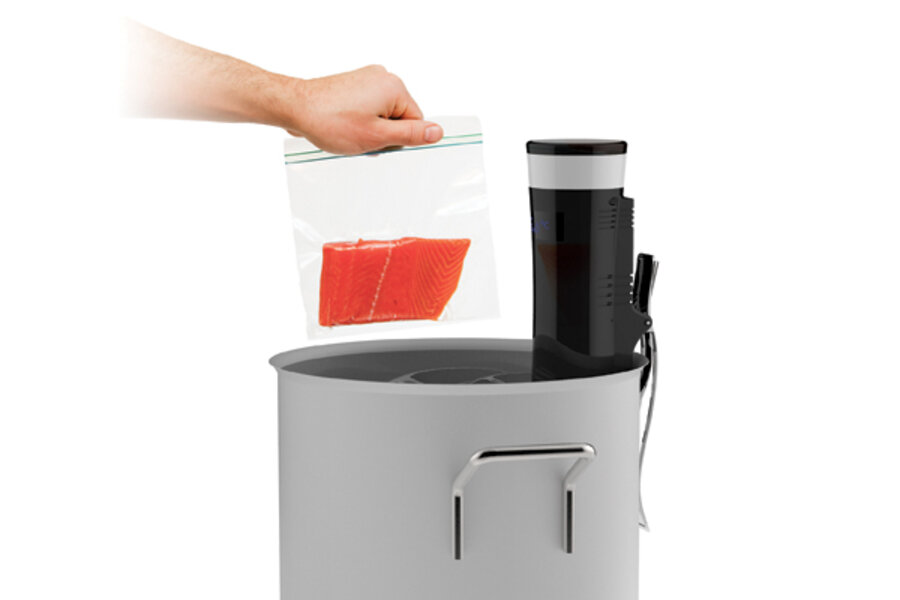Sous vide: How to cook meat perfectly with 'Sansaire'
The chefs at Kayne Prime steakhouse in Nashville, Tenn., love the cutting edge. One of the restaurant's most praised dishes is three small steaks cooked "sous vide." Traditional grilling uses high temperatures to penetrate and cook the center of a steak, but if mistimed, the meat's edges will be gray, dry, and overcooked. Sous vide, on the other hand, uses precise temperature control to evenly cook beef edge-to-edge without fear of grilling away the juices.
This slow-cooking style requires specialized equipment, a hurdle that for years has kept the sous vide process sequestered in the kitchens of high-end restaurants.
Lukas Svec thinks sous vide is too good to keep locked up in steakhouses. He says it's time to bring the process home.
With cofounder Scott Heimendinger, Mr. Svec built the Sansaire, a $200 kitchen appliance that can turn nearly any pot into a sous vide machine – no stove or gas required.
Whether you try out the Sansaire or a $1,000 industrial "immersion circulator," cooking sous vide takes a few steps. First, use a circulator to heat a pot of water. These appliances keep the water at a precise, consistent temperature.
Second, place the ingredients – steak, fish, eggs, or even fruit – in an airtight bag. The Sansaire team says a simple zip-lock bag will do the trick. Then drop the package into the water bath.
Since proteins break down in very predictable ways, chefs can pinpoint preferred settings. But get used to waiting hours (or several days) for your dinner. This is slow food at its best. A rib-eye steak should cook at 126 degrees F. for an hour, while short ribs or briskets call for 144 degrees F. for 72 hours. For comparison, most gas stoves can easily reach 350 degrees F. and cook meat much faster, but in a less controlled fashion.
"With sous vide, it's like dialing in a temperature," says Svec. "You're assured of exactly what you want every time." And because the heat stays so much lower than with a grill or skillet, the window for messing up is much more forgiving. With several cuts of beef, you could lose track of an hour without ruining the meat's texture.
Some dishes will require one extra step. Many people like the taste of a little char on the outside of their steak, something sous vide machines cannot add on their own. Svec recommends putting oil or butter in a heavy pan on high heat, then searing the fully cooked steak for about a minute on both sides.
The Sansaire is available at sansaire.com and the cooking goods store Sur La Table, which says it will offer regular classes on how best to use the appliance. Rival company Sous Vide Supreme offers a line of all-in-one water ovens that range in price from $330 to $600.
For more on how technology intersects daily life, follow Chris on Twitter @venturenaut.






